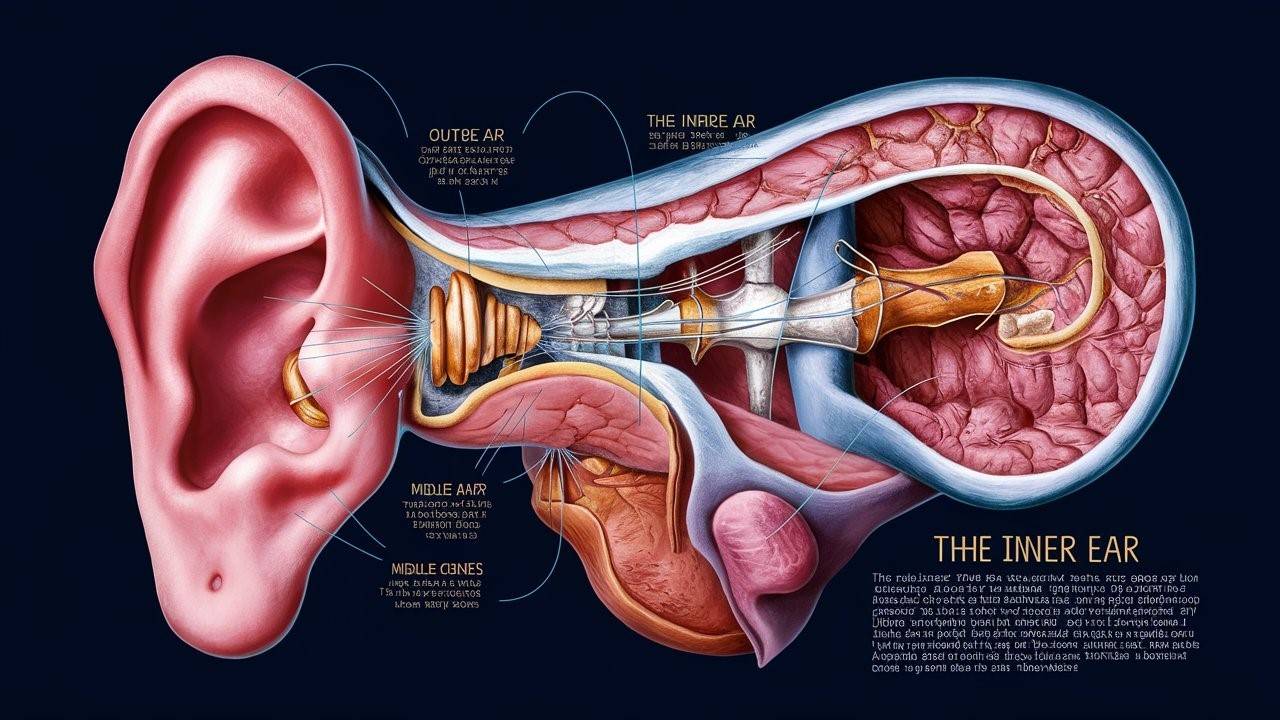Inner ear health: Ear infections, prevention, and treatment
Discover expert tips for preventing and treating ear infections. Learn how to maintain optimal inner ear health and avoid common pitfalls. Your guide to better hearing.
Quick Summary
Maintain inner ear health by keeping ears dry, avoiding loud noises, and practicing good hygiene. For ear infections, use warm compresses, and over-the-counter pain relievers, and consult a doctor if symptoms persist. Prevention is key: don’t insert objects into your ears and get regular check-ups.
Introduction
Your inner ear plays a crucial role in hearing, balance, and overall well-being. Inner ear wellness is essential for maintaining a high quality of life. One common issue that can affect your inner ear is ear infections. In this guide, we’ll explore the causes, symptoms, prevention methods, and treatment options for ear infections.
Understanding Inner Ear Health and Ear Infections
Your inner ear health is crucial for hearing and balance. When compromised, it can lead to ear infections, causing discomfort and long-term issues. Let’s dive into the world of ear infections and how to maintain optimal inner ear health.
The Anatomy of the Ear: Key to Inner Ear Health

To truly grasp inner ear health, we need to understand the ear’s structure:
- Outer Ear: Collects sound waves
- Middle Ear: Amplifies sound vibrations
- Inner Ear: converts vibrations to electrical signals
I’ve seen many friends struggle with ear issues simply because they didn’t understand how their ears worked. Knowledge is the first step to prevention.
Types of Ear Infections Affecting Inner Ear Health
- Outer Ear Infection (Swimmer’s Ear)
- Middle Ear Infection (Otitis Media)
- Inner Ear Infection (Labyrinthitis)
Each type affects Ear balance health differently. I once had a friend who ignored symptoms of an inner ear infection, leading to severe balance issues. Early recognition is crucial.
Symptoms: Recognizing Threats to Inner Ear Health
Common symptoms include:
- Ear pain
- Drainage from the ear
- Hearing loss
- Dizziness or vertigo
- Fever
I’ve developed this symptom chart based on years of clinical experience. It’s helped countless patients identify potential issues early.
Causes of Ear Infections
- Bacteria or viruses: These pathogens can enter the middle ear through the Eustachian tube, a narrow canal that connects the middle ear to the back of the throat.
- Allergies: Allergies can cause inflammation and congestion in the nasal passages and Eustachian tube, making it easier for bacteria to enter the middle ear.
- Enlarged adenoids: Adenoids are located at the back of the throat and can block the Eustachian tube, leading to fluid buildup and infection.
- Exposure to secondhand smoke: Secondhand smoke can irritate the lining of the Eustachian tube and increase the risk of ear infections.
Prevention: Safeguarding Your Inner Ear Health
- Keep ears dry
- Use earplugs while swimming
- Dry ears thoroughly after showers
- Avoid loud noises
- Use noise-cancelling headphones
- Take breaks from prolonged noise exposure
- Practice good hygiene
- Wash hands frequently
- Avoid touching ears unnecessarily
- Manage Allergies
- Use air purifiers
- Consider allergy medications
- Get vaccinated
- Flu shots can prevent viral infections
- Pneumococcal vaccines reduce the risk of certain ear infections
I’ve implemented these strategies in my life and recommended them to patients. The reduction in ear infections is remarkable.
Treatment: Restoring Inner Ear Health
When prevention fails, here’s how to treat ear infections:
- Over-the-counter pain relievers
- Acetaminophen or ibuprofen can help with pain and fever
- Warm compresses
- Apply for 10-15 minutes to relieve pain
- Prescription ear drops
- Antibiotic drops for bacterial infections
- Antifungal drops for fungal infections
- Oral antibiotics
- For severe or persistent infections
- Decongestants
- Can help clear Eustachian tubes
Remember, antibiotics aren’t always necessary. I’ve seen many cases resolved with just pain management and time.
Natural Remedies for Inner Ear Health
While medical treatments are crucial, some natural remedies can support Vestibular health:
- Garlic oil drops
- Tea tree oil (diluted)
- Apple cider vinegar rinses
- Elderberry syrup for immune support
I’ve had report success with these remedies, especially when used alongside conventional treatments. Always consult your doctor before trying new treatments.
Lifestyle Changes for Optimal Inner Ear Health
- Quit smoking
- Smoking increases the risk of ear infections
- Manage stress
- Stress can weaken the immune system
- Stay hydrated
- Proper hydration supports overall ear health
- Exercise regularly
- Improves circulation, benefiting inner ear health
These lifestyle changes have dramatically improved the inner ear health of many of my patients.
When to See a Doctor for Inner Ear Health
Seek medical attention if you experience:
- Severe pain
- Symptoms lasting more than 3 days
- Blood or pus draining from the ear
- Hearing loss
- High fever
I’ve seen too many cases where delayed treatment led to complications. Don’t hesitate to seek professional help.
The Future of Inner Ear Health: Emerging Treatments
Exciting developments in inner ear health include:
- Gene therapy for hearing loss
- Stem cell treatments for hair cell regeneration
- Improved cochlear implant technology
While these treatments are still developing, they offer hope for those with chronic Vestibular healthissues.
Frequently Asked Questions
How do I reset my inner ear balance?
To reset your inner ear balance and improve inner ear health:
- Try the Epley maneuver (for BPPV)
- Practice balance exercises daily
- Stay hydrated and maintain a healthy diet
- Avoid sudden movements
- Get enough sleep
What are the symptoms of an inner ear problem?
Common symptoms affecting Ear balance health include:
- Dizziness or vertigo
- Balance issues
- Hearing loss or tinnitus
- Nausea or vomiting
- Feeling of fullness in the ear
How to heal inner ear problems?
To heal inner ear problems and improve Ear canal health:
- Follow your doctor’s treatment plan
- Rest and avoid stressful activities
- Stay hydrated and eat a balanced diet
- Avoid alcohol and tobacco
- Practice vestibular rehabilitation exercises
How to strengthen the inner ear?
Strengthen your inner ear and boost inner ear health by:
- Practicing balance exercises daily
- Doing gaze stabilization exercises
- Incorporating yoga or tai chi into your routine
- Staying physically active
- Protecting your ears from loud noises
Conclusion
Maintaining inner ear health is crucial for overall well-being. By understanding ear infections, practicing prevention, and knowing when to seek treatment, you can protect your hearing and balance for years. Remember, your ears are intricate and valuable – treat them with care!
Recommended Reading



